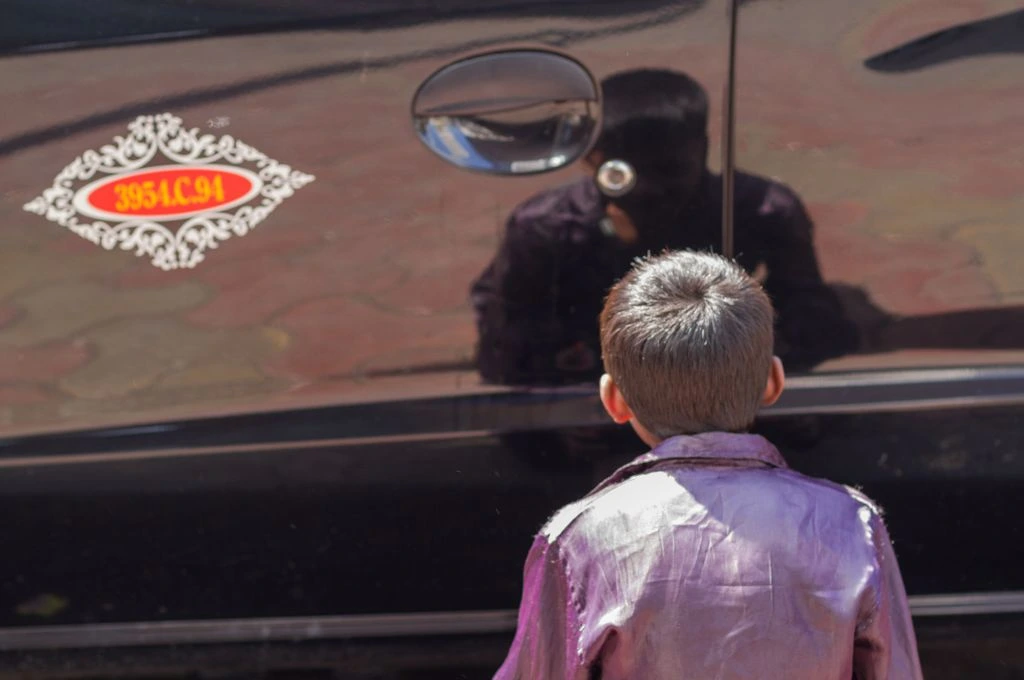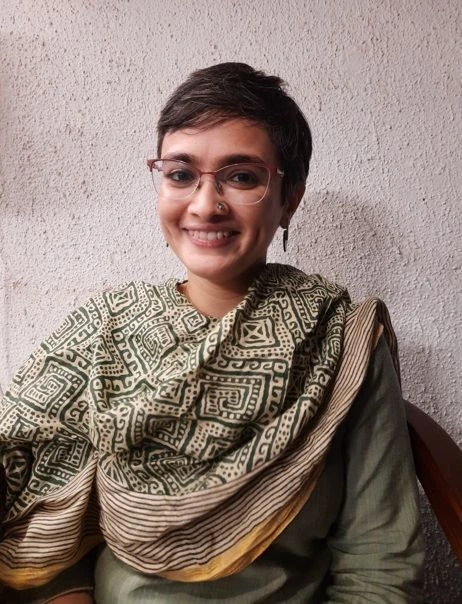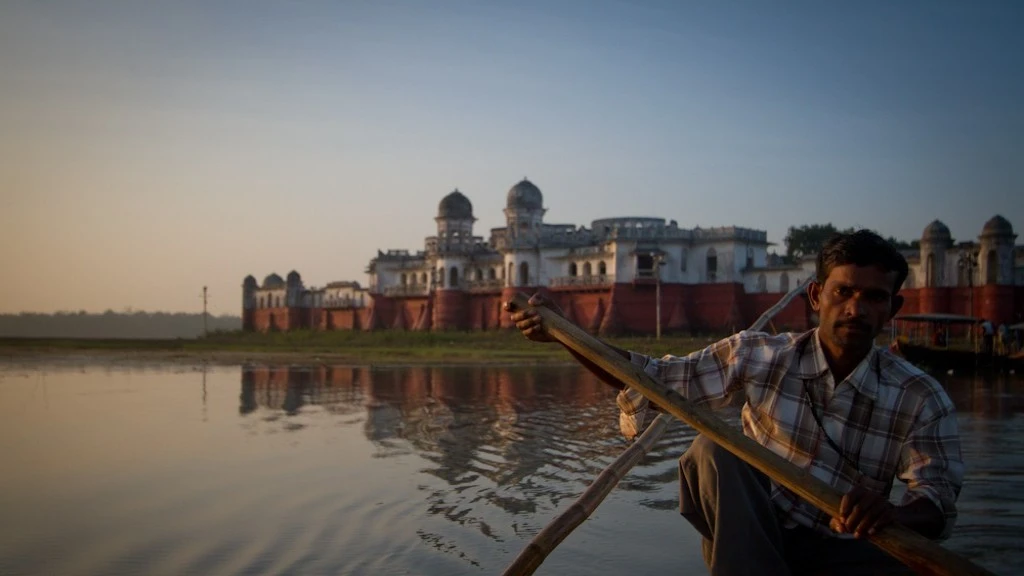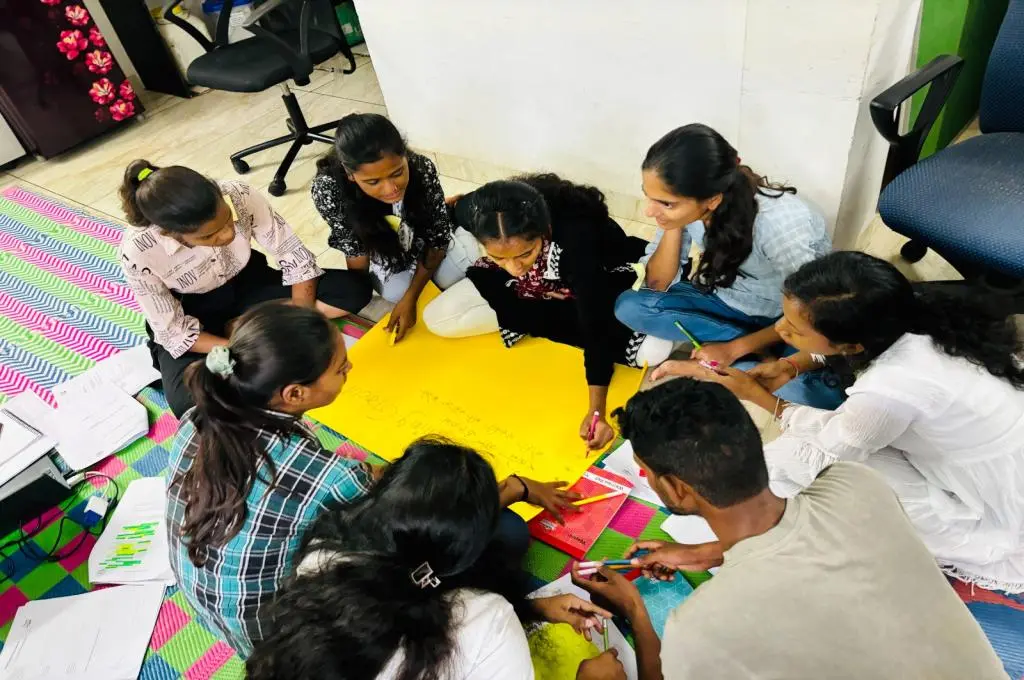Young people growing up in low-income communities in Indian cities are at a higher risk of developing mental health concerns compared with the rest of the urban population. This is due to additional stressors in marginalised areas. These include the intersecting impacts of insecure housing and informal livelihoods, a paucity of basic services, and residents having to bear the brunt of discriminatory and oppressive social norms. A recent study found that children in New Delhi’s slums remain a neglected group, even though they are “exposed to chronic stressors that increase their risk of developing mental disorders”. India’s draft National Youth Policy (2022) mentions the need to safeguard young people’s mental health but remains confined to awareness building and the role of mental health professionals.
Traditional approaches to mental health often fail to account for structural determinants, that is, the historical, systemic, and political forces driving inequity in this domain. For instance, the overtly medicalised approach to mental well-being—often framed as diagnosis, prognosis, and intervention—fails to account for the additional stressors arising from marginalisation, neurodiversity, and people’s lived realities. As the Mariwala Health Initiative (MHI) articulates, mental health exists on a continuum, and a psychosocial approach to it recognises that aspects of a person’s psychology (thoughts, emotions, feelings, etc.) as well as social norms, values, and relationships influence mental well-being. Moreover, an intersectional lens to mental health acknowledges multiple identity markers (such as one’s gender, caste, and disability) and examines how their unique combination in individuals impacts overall mental well-being. Without these nuances, frameworks for mental health and well-being risk being inadequate.
Youth for Unity and Voluntary Action (YUVA) has been working with marginalised communities at the grassroots for the past four decades. We strive to enable people to claim their social, economic, and cultural rights. Our extensive engagement with youth has also emphasised that their holistic development cannot be separated from attention to their mental health and well-being. This article summarises some of the key lessons we’ve learned while supporting young people’s mental health resilience and well-being, and is applicable to working with other groups of people too. Specifically, it highlights what grassroots organisations can embed in their systems and processes, including context-specific, people-centred preventive strategies; the importance of critical support from peer groups; the role of early identification and diversified response to mental distress in preventing escalation; and the value of referrals for young people needing more specialised support.

Building mental health resilience in urban youth
1. Create context-specific approaches to mental health and well-being
Marginalisation is complex and impacts young people’s mental health in different ways. For instance, a young person’s experience of ‘insecurity’ in a basti (informal settlement) subjected to regular evictions, and its resultant impact on their mental health, is quite different from that of someone living in a resettlement colony. Different people living in similar contexts or situations may also have different experiences. Structural violence in bastis and its many manifestations lead to unique stressors—for example, a young girl’s persistent anxiety due to the issue of catcalling in her neighbourhood or the threat to her safety when visiting the community toilet at night. Similarly, an adolescent may face daily violence or struggle to access water, which can impact their ability to continue with their studies.
Strategies to address the mental distress arising from such situations need to be mindful of intersecting challenges. They must also be rooted in specific contexts in order to offer appropriate support to young people. In many cases, counselling alone may not suffice, but building people’s agency and establishing collective processes that provide strength and support can prove more effective. For instance, YUVA’s work with the Malvani Yuva Parishad youth group focused on developing young people’s collective voice so that they could resist the issue of catcalling and actively advocate for safe communities. The youth used mediums such as street plays to highlight the harassment of girls, sensitise people, and push for behaviour change, actively seeking people’s participation for a safer community. Thus, approaches to well-being need to be context-specific. They need to factor in peer support as well as strengthening mechanisms, and can be layered on other development-oriented interventions to address larger issues causing mental distress in youth.
2. Keep your ear to the ground
Grassroots workers are closely connected to marginalised communities. Through years of engaging with and supporting people on the ground, they often become trusted friends and advisors. With their basic training in identifying early signs of mental distress—first for themselves and then for others—and facilitating supportive community care networks, they can function as effective first responders. By fostering a culture of open conversations around mental health, grassroots workers play a significant role in raising awareness about mental well-being, helping people realise that their discomfort may stem from a mental health issue or be aggravated by it, and encouraging those who are hesitant to seek counselling support.
Many times, young boys find it more challenging to talk about their mental health. In some cases, their behaviour—often expressed as anger or frustration—may reveal deeper clues about their inner tensions. By developing listening skills as well as deep understanding and awareness around mental health, and by encouraging young people to articulate and express themselves in safe spaces, protective community care frameworks can be established, potentially reducing the escalation of mental health risks.
One way in which community workers at YUVA have sparked conversations around mental health is through a group activity that begins with everyone colouring the parts of their body that feel tense on a piece of paper. This is followed by a guided meditation practice and a few more exercises, before people reflect and share their emotions and feelings. This has often been an innocuous yet effective conversation starter.
3. Diversify how you provide mental health support
Mental health and well-being services for the community can take different forms. It is critical to look at mental health support through a wide lens to ensure that people can access the care they need at their own pace, in a manner that is attuned to the rest of their work and responsibilities. In our experience, traditional counsellors often struggle to adjust to the complexities of the challenges faced in bastis. These complexities arise due to a range of unique stressors and their compounding effects on marginalised people, varying means of access and approaches to social networks, and the diversity of resilience and coping strategies individuals may adopt.
Trained community workers are usually able to initiate conversations, share simple and effective tools for managing mental health, and refer those who need more in-depth support to specialised networks and institutions. This community-led approach to mental healthcare aligns with the Atmiyata approach, which the World Health Organization (WHO) recognises as one of the 25 good practices for community outreach mental health services globally.
At an individual level, dance movement therapy has often been a powerful way for young people to surface deep emotions and address them through the medium of movement. It has allowed community workers to bridge support for youth in distress and refer them to further specialists as needed. At the community level, nature-based placemaking in urban poor communities has emerged as an important approach. It refers to the creation of green spaces in densely packed settlements, designed collaborately by residents and local government authorities. Such spaces are much-needed for physical and emotional development, offer mental support through socialisation possibilities, and hold rejuvenative potential for each individual.
Thus, as MHI puts it, “the intention of care must not be to ensure a person reaches a point where they no longer need care, but to re-envision what constant, consistent, community-led, survivor-centered, intersectional care looks like.”
4. Let young people lead the design of supportive services
We believe in the principle of ‘jinka sawaal unka netritwa’ (solutions and approaches are best defined by those facing the problems). In the case of mental health support services too, young people have sometimes identified a gap and designed ways to address it themselves; we simply support them to lead this change. For instance, during the COVID-19 pandemic, young members of the Anubhav Shiksha Kendra, an experiential learning programme, and YUVA collaborated on the ‘Me to Diary’ initiative, a journalling programme by and for youth. They organised ‘Sundays for self-reflection’, helping one another navigate their emotions using creative outlets such as drawing, writing, and spoken word. These young people created a safe and non-judgemental space for one another and their emotions, allowing for self-exploration and vulnerability. The programme continued through multiple editions based on participants’ feedback on its impact on their self-confidence, self-compassion, and emotional understanding. It is still a youth-led endeavour.
5. Be ready to evolve
Even as an organisation that has intentionally prioritised people’s mental well-being and growth, we recognise that much more needs to be done. India reports the highest suicide figures in the world, with 41 percent of those affected being under 30 years of age. It is critical for organisations across various sectors to create cultures that destigmatise mental health and make care accessible to all. Encouraging open conversations about mental health and well-being, irrespective of the sector or theme one works in, is an important first step to creating an enabling culture. Developing people’s knowledge of relevant tools and furthering access to relevant information and repositories is equally vital. Adopting policies that enable people’s mental health journeys and ensuring their effective implementation is critical too. Organisations such as Sangath, and Centre for Mental Health Law & Policy offer a range of tools, resources, and accessible learning material. As a learning organisation, we remain aware of the role that non-medical experts can play in localised and context-appropriate ways while being mindful of the impacts of structural oppression.
—






